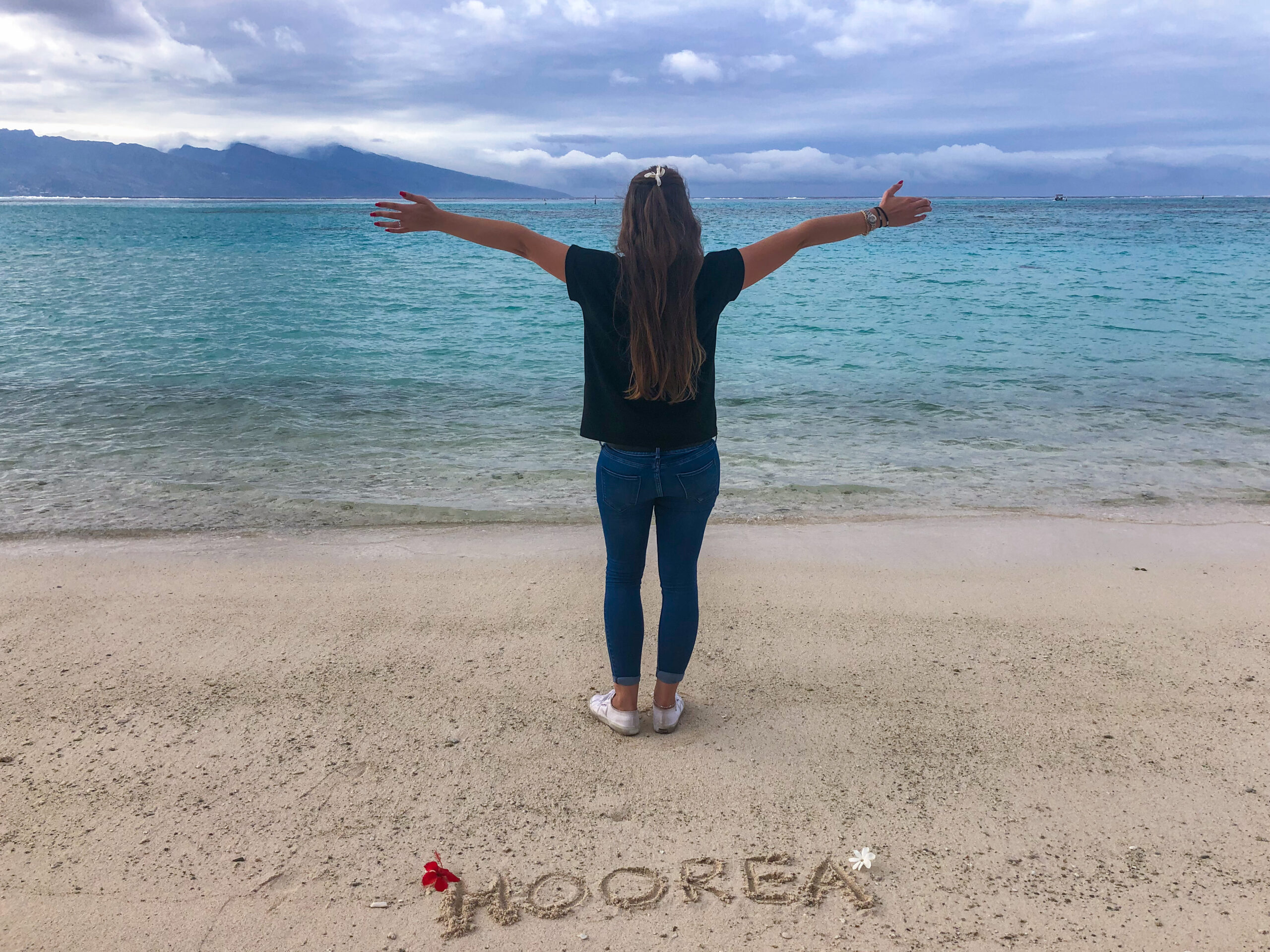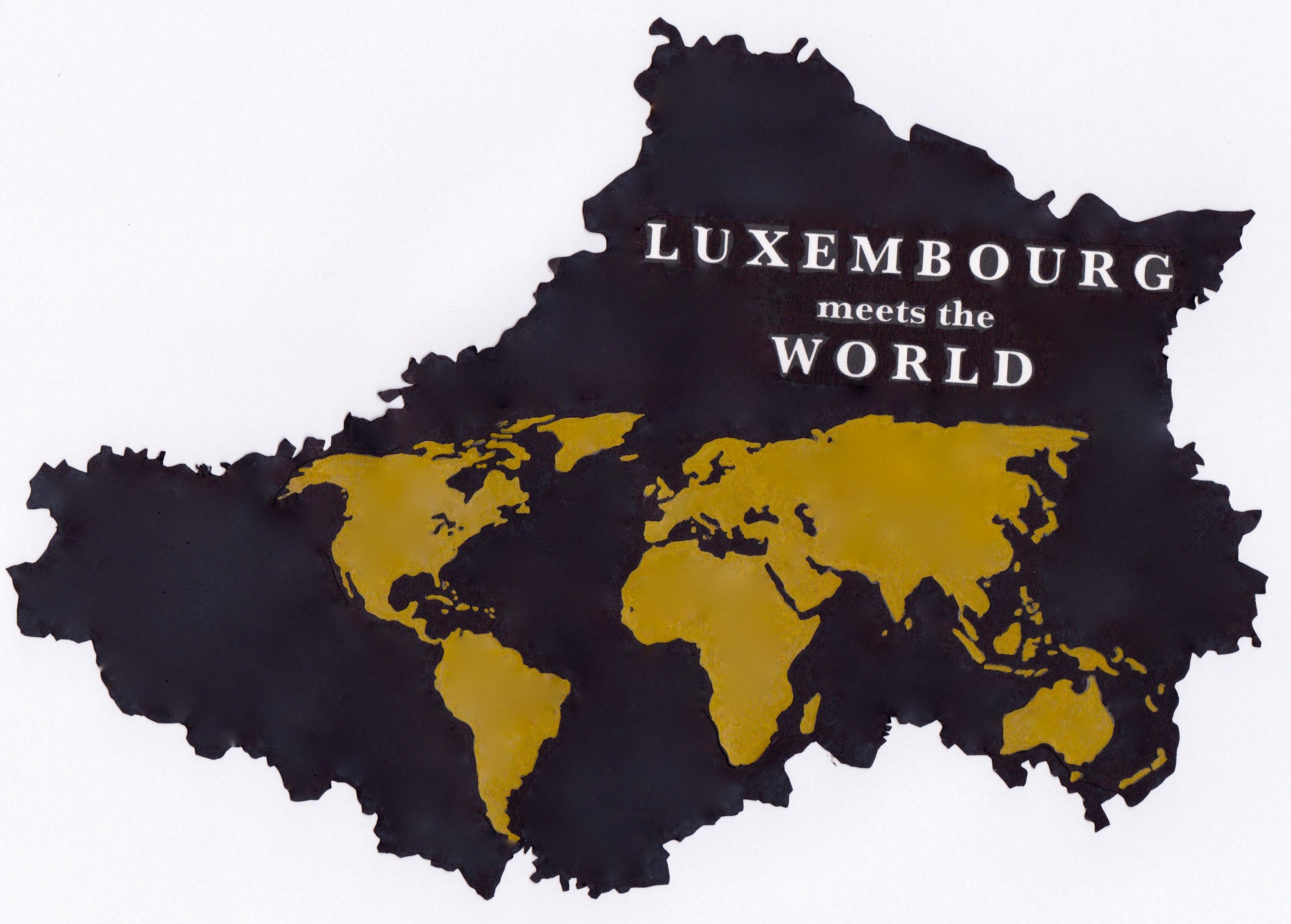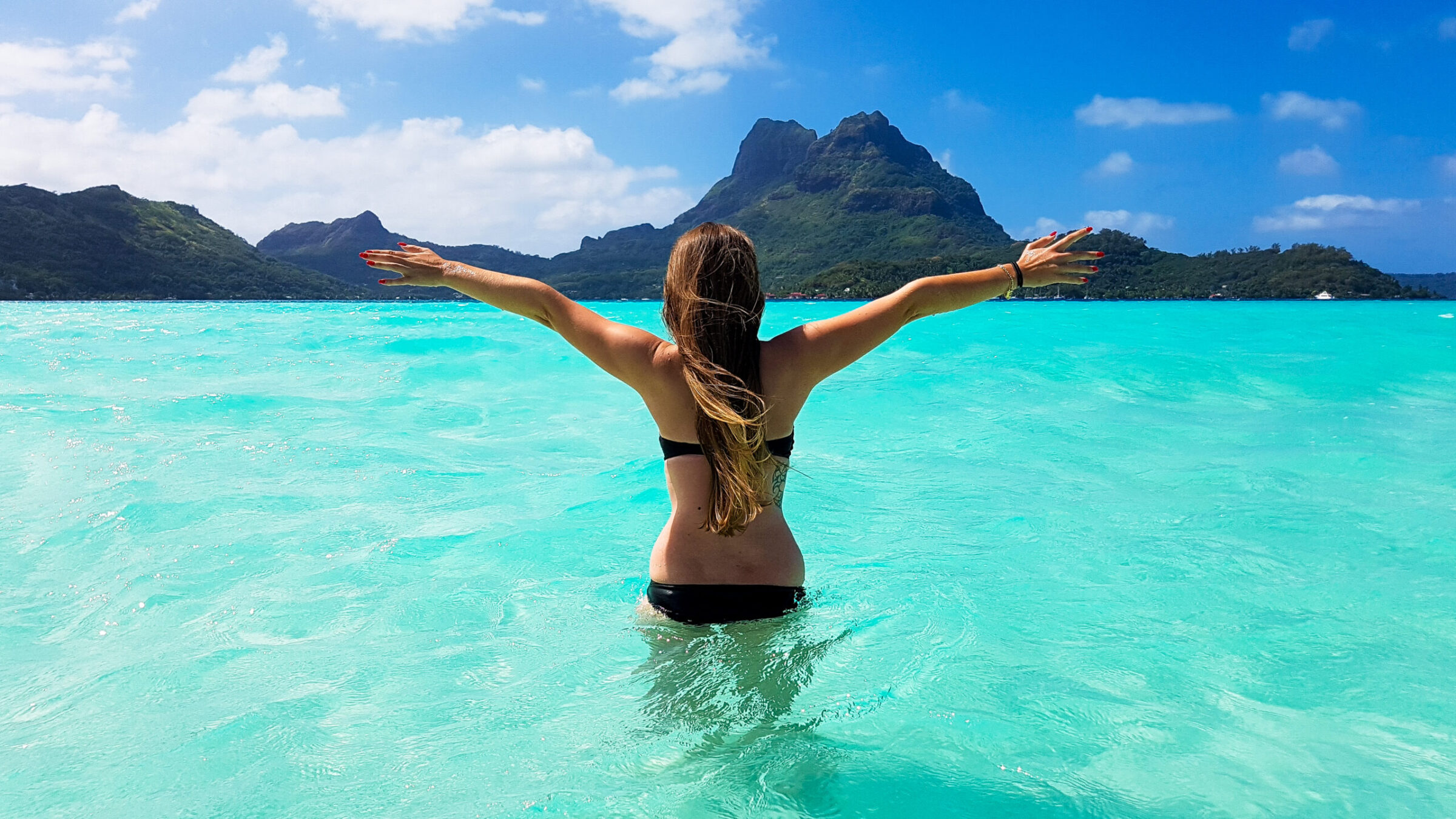
Top 4 things to do in Moorea, French Polynesia
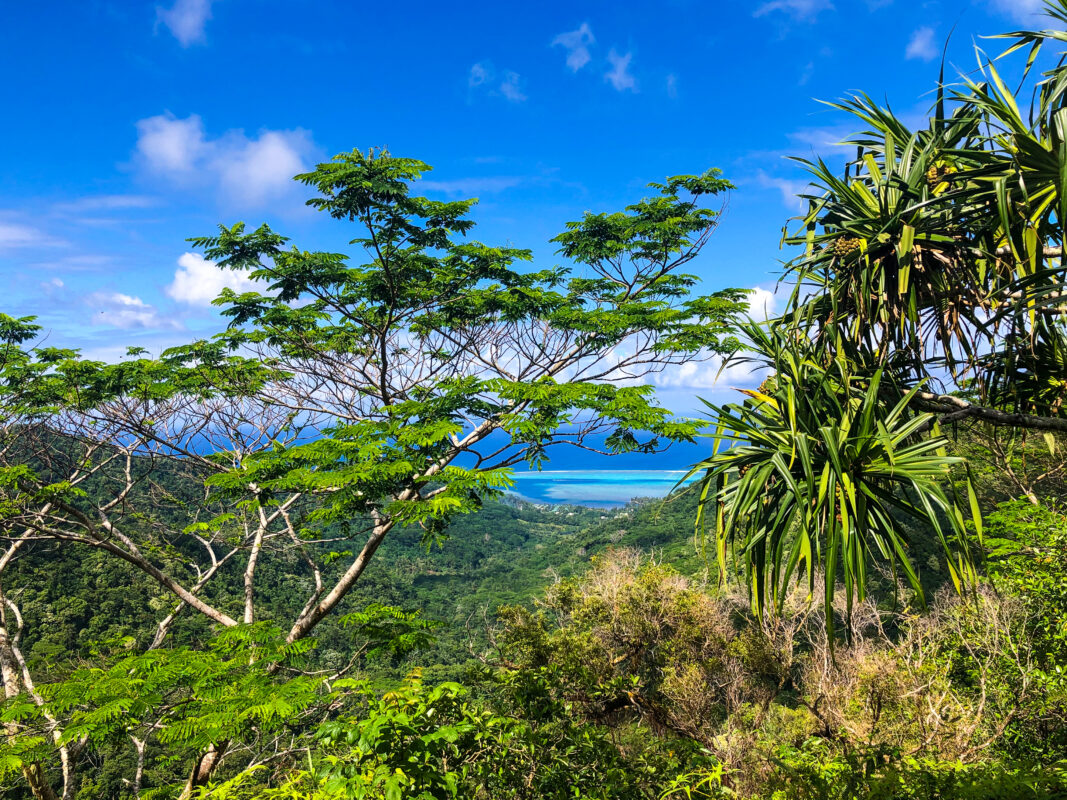
Moorea, also spelled Mo’orea, is a volcanic island in French Polynesia. Its name comes from the Tahitian word Mo’ore’a, meaning “yellow lizard.” Just ten nautical miles from Tahiti, Moorea is often affectionately referred to as Tahiti’s little sister. With its lush mountains, crystal-clear lagoons, and laid-back charm, it’s no wonder Moorea is one of the most popular honeymoon destinations – second only to the iconic Bora Bora.
Moorea was the first stop on our honeymoon and honestly, it was the perfect starting destination. From exploring the lush mountain trails to enjoying the peaceful beaches, Moorea offered a perfect balance of adventure and relaxation to start our holiday.

With its eight dramatic mountain peaks rising from the crystal clear lagoon and the typical Tahitian lifestyle, Moorea is one of the most beloved destinations in French Polynesia. It’s also considered the best island for hiking in the region, offering more officially marked trails than any other island. The lush green mountains provide a stunning contrast to the turquoise bright waters of the lagoon.
The best time to visit Moorea is during the dry season, which runs from March to late November. Nonetheless occasional rain can still occur during this period, which will turn hiking trails very slippery and muddy. The weather in French Polynesia can change quickly, making it tricky to plan outdoor activities with certainty.

Private Humpback Whale Swim Tour
Moorea is one of the rare places in the world where you can swim with humpback whales in their natural habitat. You can either book a normal group tour or a private swim tour. It’s important to know and understand that it is at no point guaranteed that you will see humpback whales. These are wild, free-roaming animals, and encounters depend entirely on their presence and behavior.
This activity is strictly seasonal. Humpback whale season runs from July to late November. The months with the best chances for sighting those incredible animals is from mid-August to the end of October.
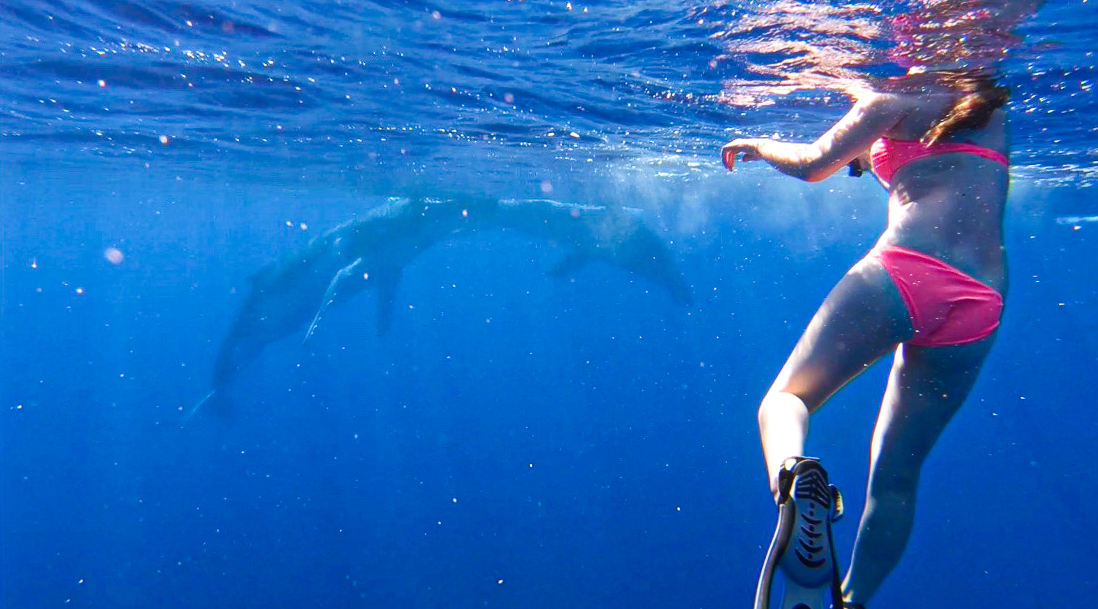
The private humpback whale swim tour, is guided by a marine biologist and accomopanied by a cameraman. Both of them are highly knowledgable about these incredible animals. The tour starts either at 7:30 or 13:30 and lasts about 4 hours. The team will pick you up directly from your hotel’s dock.

The tour begins by heading out into the open sea. I have to admit that I was really nervous of being in the vast ocean, unable to see what’s beneath me. It is a really strange and unsettling feeling, not only because of all the horror movies set in the ocean, but when you look down, all you see is darkness.
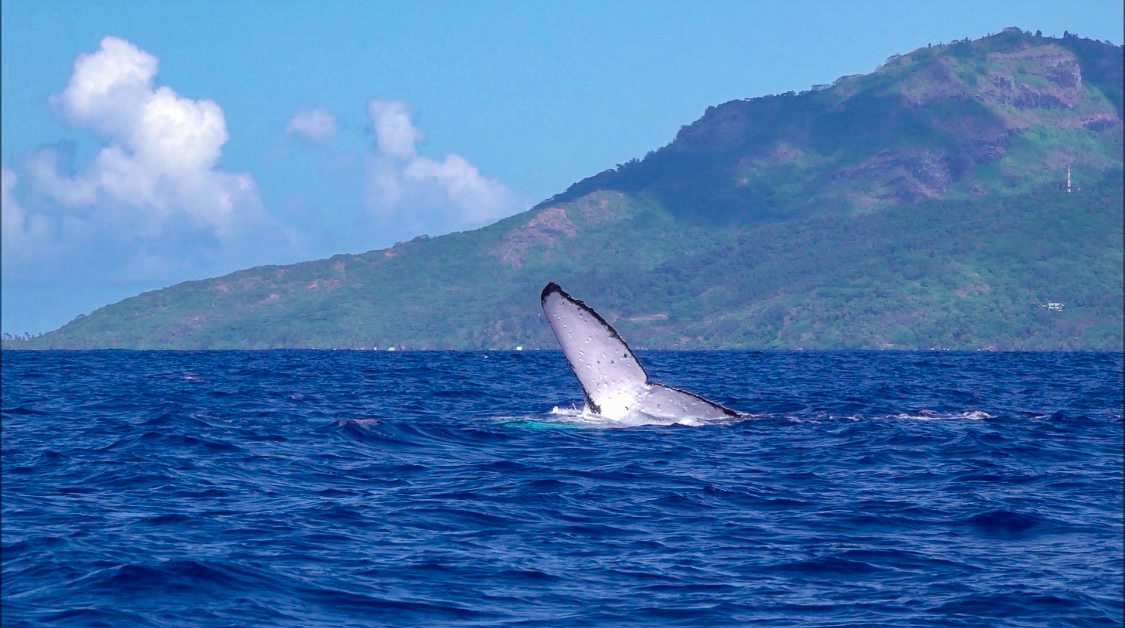
As whale sightings are not guaranteed, the crew spends some time cruising around the open sea to seach the animals. The whales are constantly moving, so they are not in the same place for long. Once the staff spots an exhalation (the characteristic blow of the whale), they head in that direction, but always with a respectful distance. And only when the conditions are right and it is safe to enter the water, you can jump into the wide open ocean. They will hand you a pair of flippers and ask you to put your diving mask on. The guide stays constantly next to you and will point you in the right direction so that you don’t miss a thing.
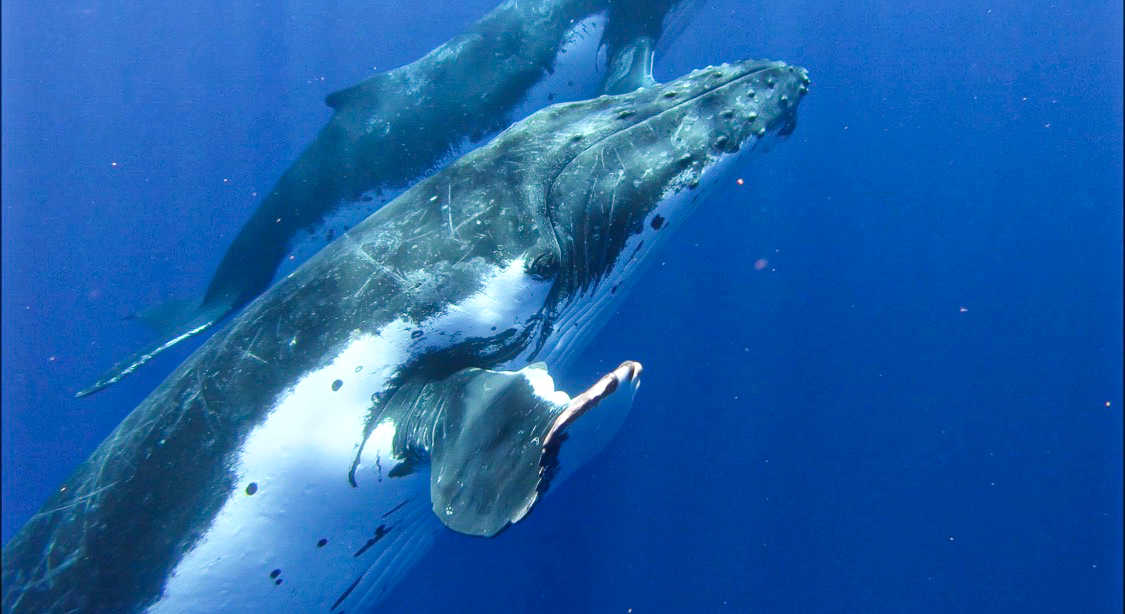
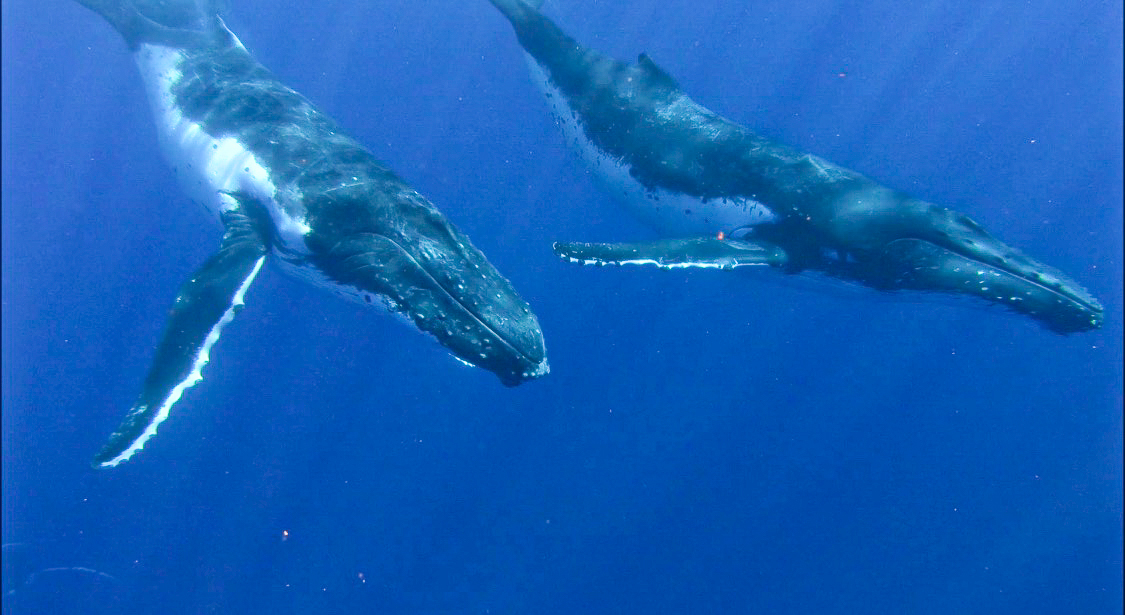
Once you are in the water and see these magnificent but massive animals swimming sraight toward you, it is both breathtaking but also a little terrifying. It is an unforgettable experience which is absolutely worth it. The whales seem to float effortlessly through the water with slow and graceful movements. At one point, two of them dove so close to us that we could look right into their eyes. This was really magic.
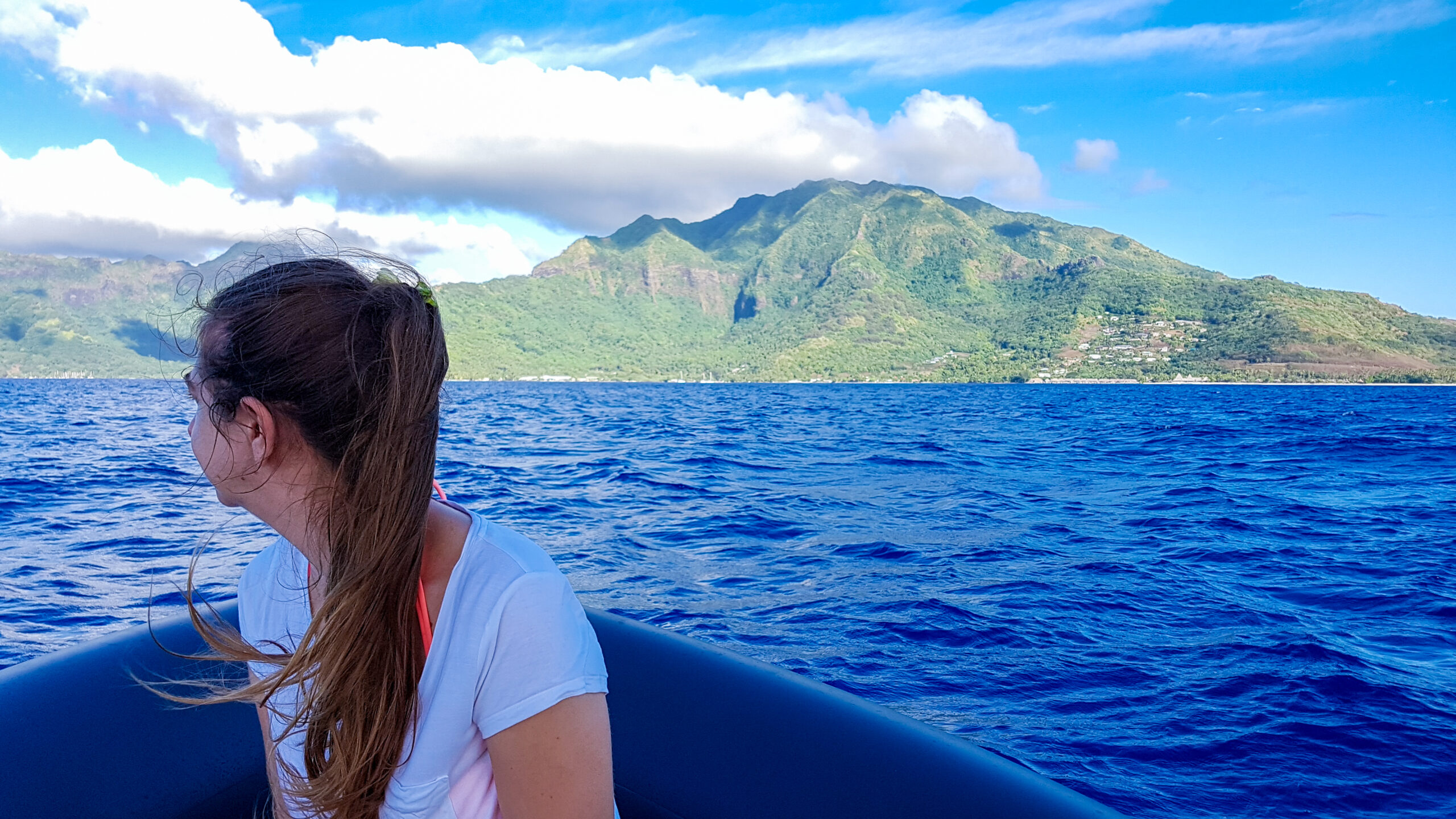
After our incredible encounter with the whales, we also had the chance to swim near a shark. I have to admit, being out in the vast open ocean made me feel a bit uneasy, so I decided to head back to the boat. Yannick, on the other hand, stayed in the water and was able to explore even more of the fascinating marine life beneath the surface. The last animals we were lucky enough to observe were dolphins. It was really an unforgettable day at sea.
Pass of the Three Coconuts
The Pass of the Three Coconuts is one of the most popular hikes on Moorea and as a result, it is also one of the most visited by tourists. The trail begins at the Belvedere Lookout, where you will have breathtaking panoramic view of Moorea’s two most famous bays, Cook Bay and Opunohu Bay with the majesticMount Rotui rising between them.
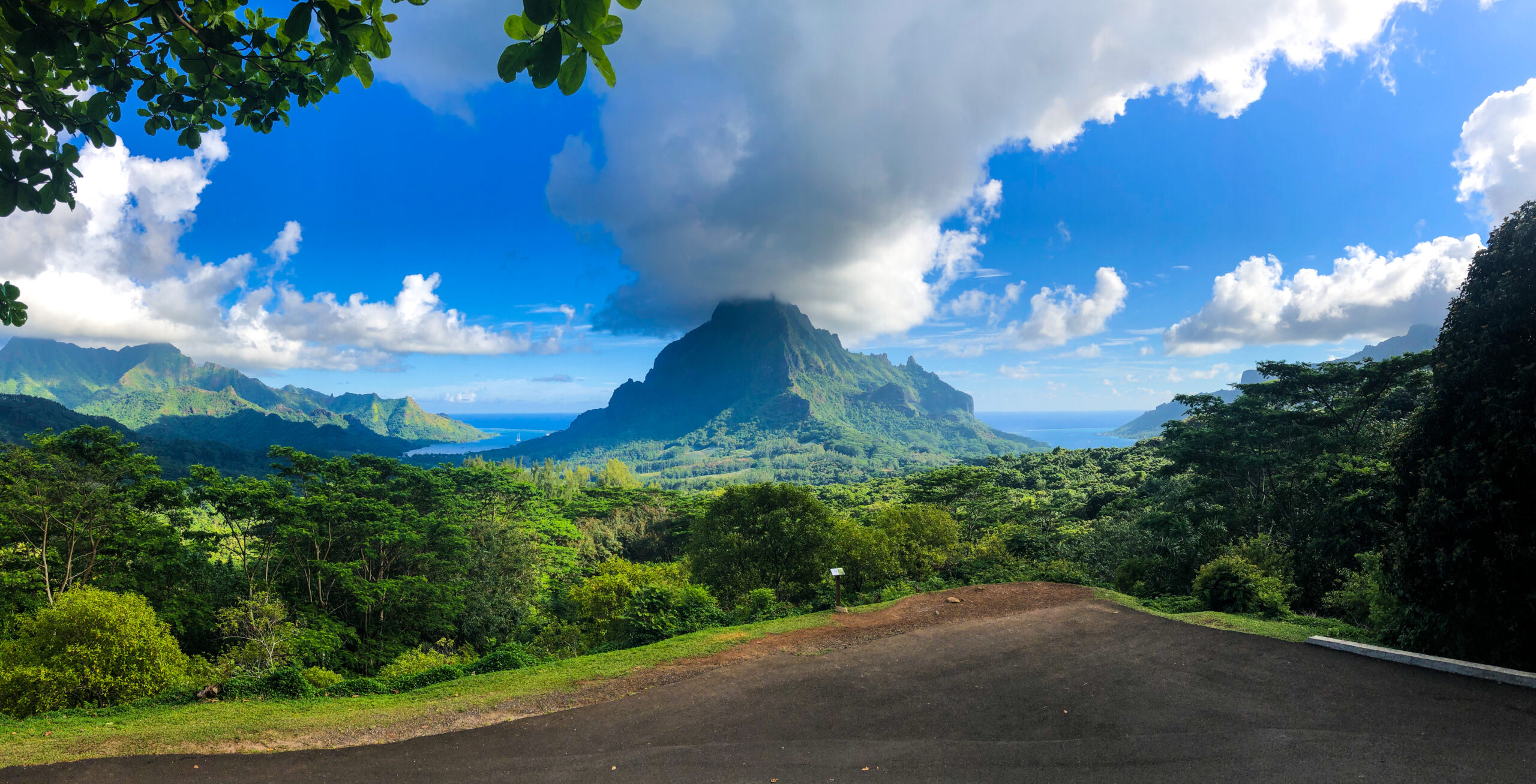
The hike begins with a moderate trail that follows part of the ancient crater leading you along the edge of the volcanic funnel. From there, the path continues toward the Pass of the Three Coconuts. This part of the trail will lead you to one of the most scenic views I’ve ever experienced, a sweeping panorama of the island’s ancient volcano.
From this viewpoint, you can see the dramatic peak of Mount Mou’aroa, also known as the Shark’s Tooth. When we arrived, the peak was covered partially in clouds, adding a mystical feel to the already spectacular landscape. This stunning lookout also marked the turnaround point of the hike.
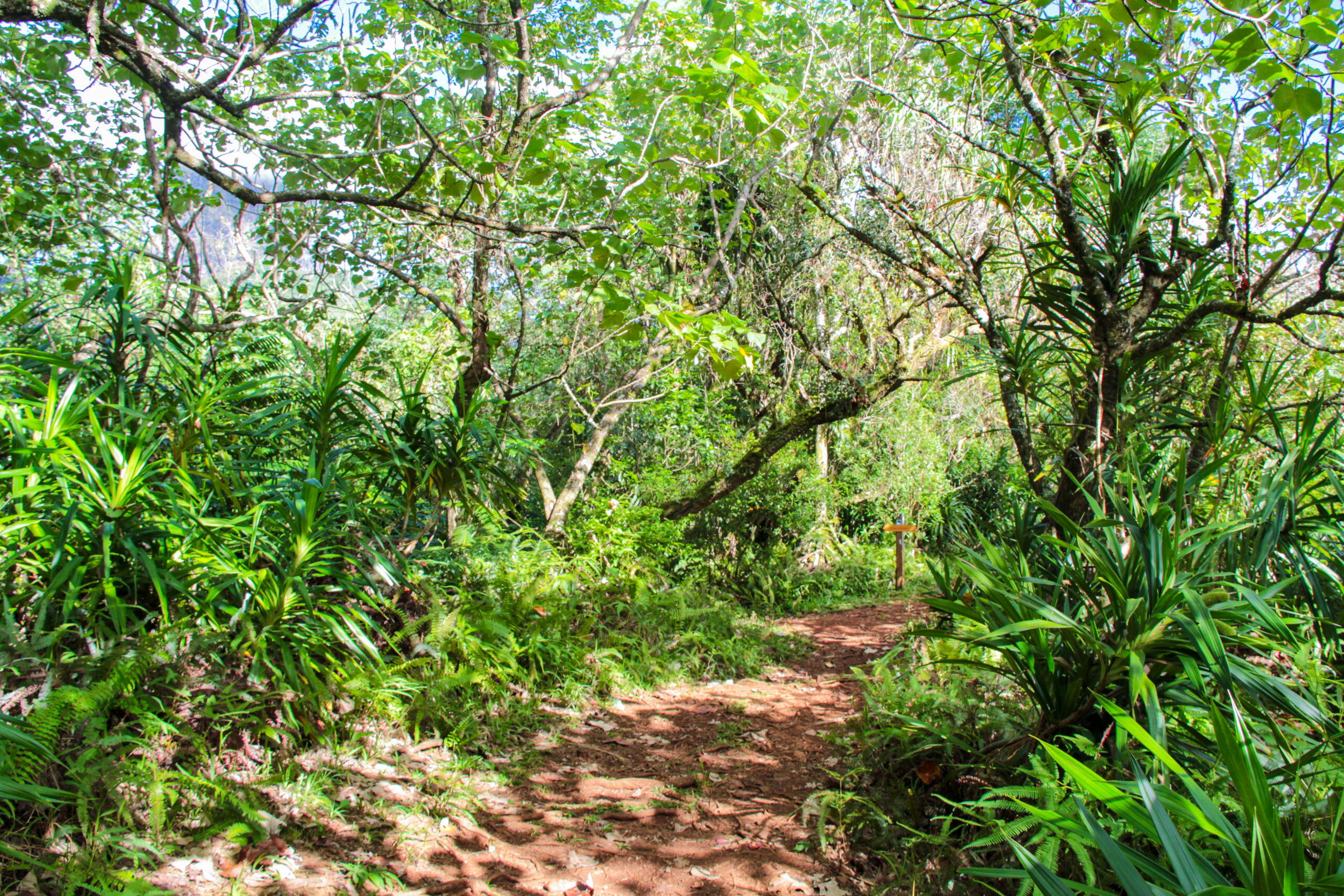
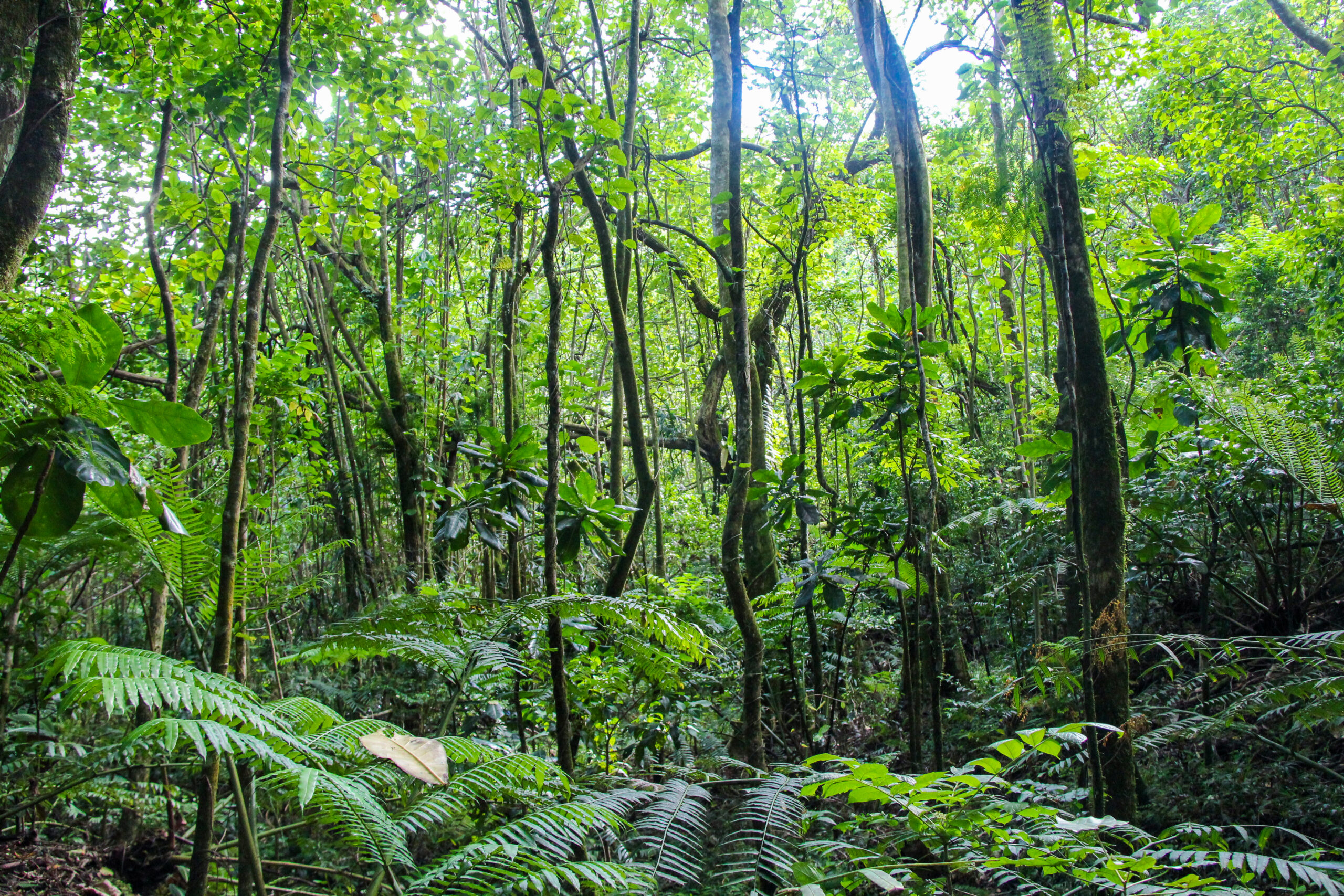
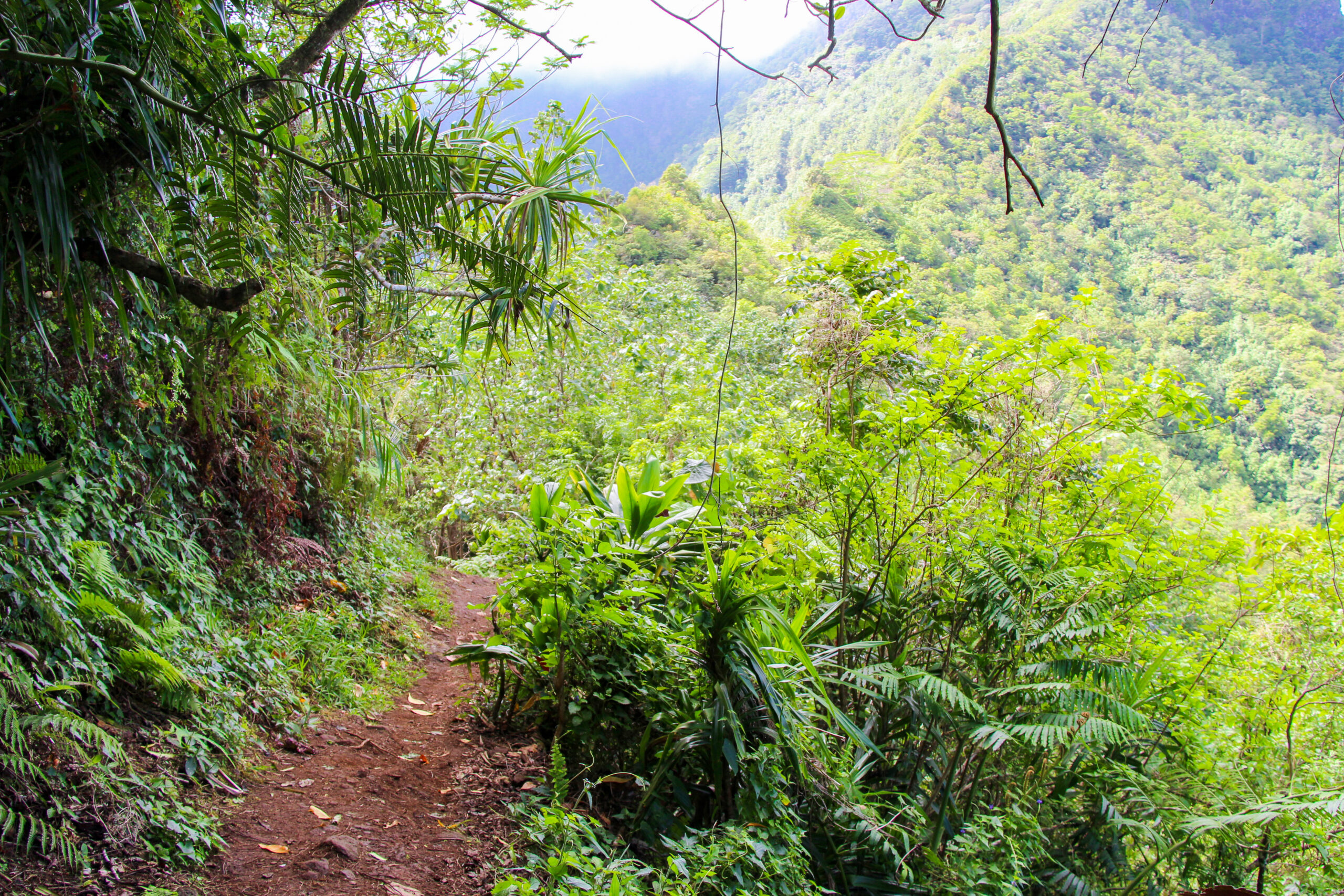
Although the hike is called Pass of the Three Coconuts, don’t look for three coconut trees. Two of them were blown away during a cyclone in the early 1980s.
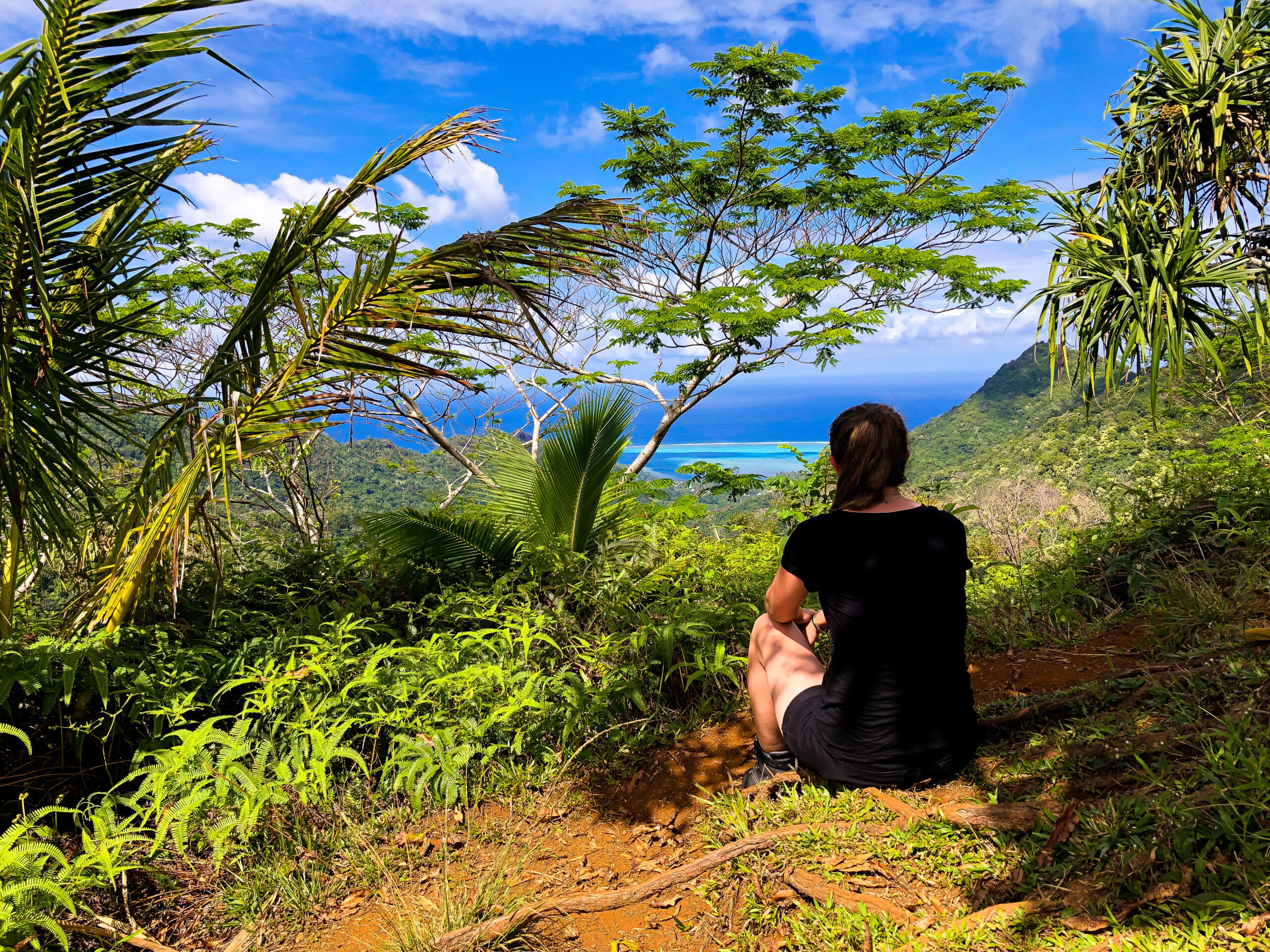
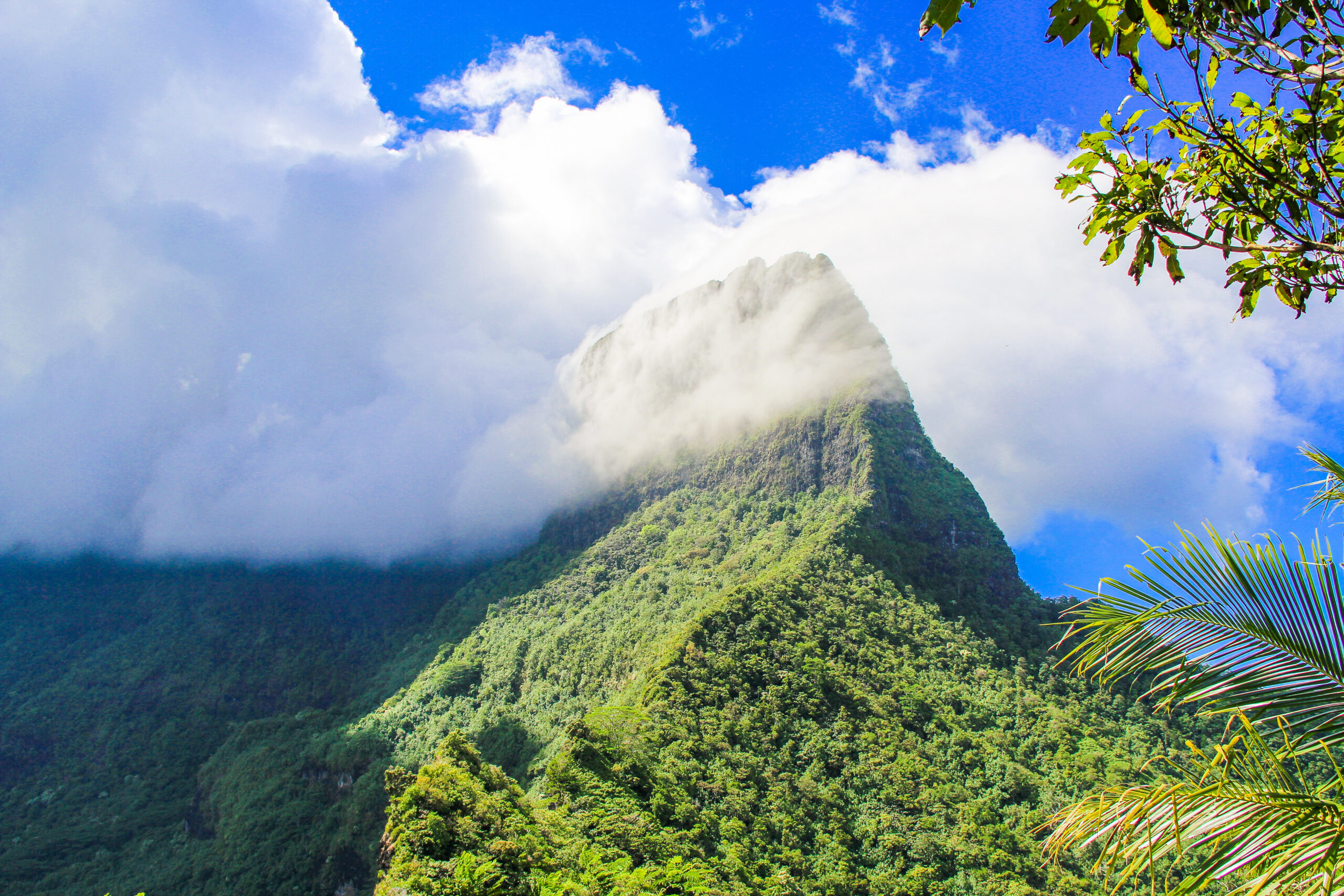
As you hike, you’ll come across a variety of plants, trees, and animals, all thriving in Moorea’s unique climate. The guide will point out some local fruits that you can try. Many of them are also favorites of the island’s wildlife. Along the way, you’ll likely encounter plenty of chickens, living their best lives in the wild, freely roaming the island without a care in the world.
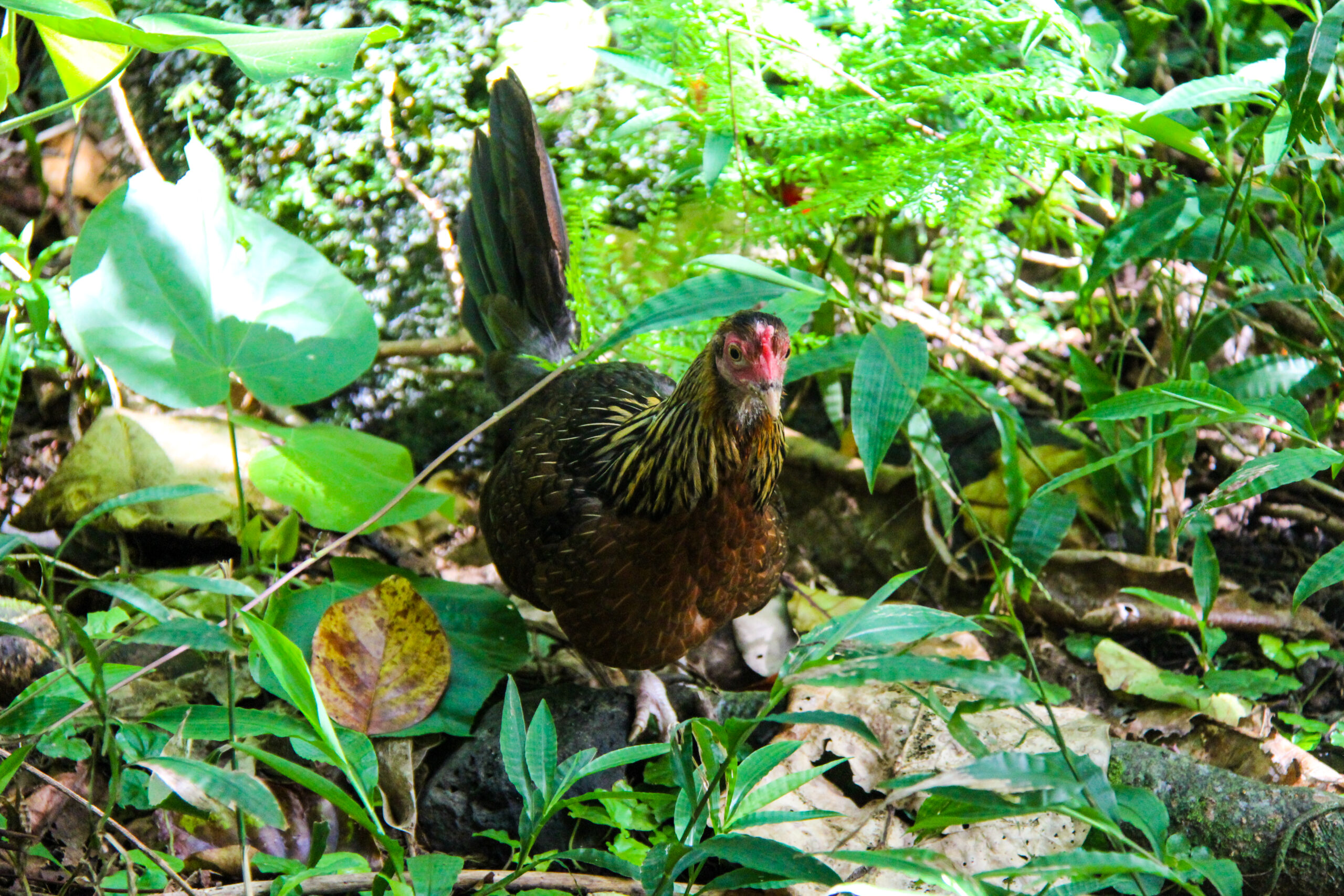
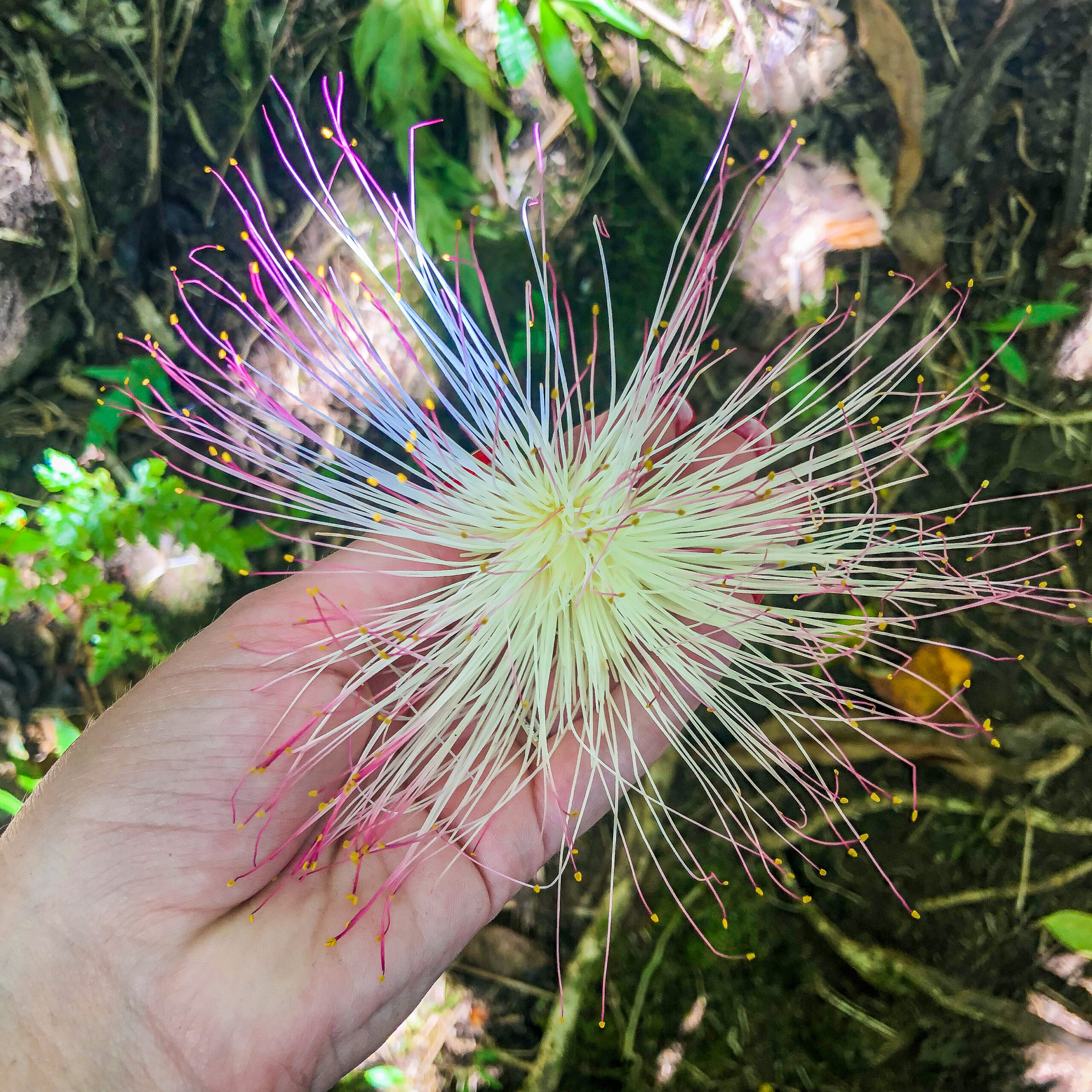
The hike itself isn’t overly difficult. It’s a moderate walk with some elevation gain. However, the tropical climate can be really challenging, especially if you’re not accustomed to the heat and humidity. I’ll admit, the constant warmth and high humidity definitely tested my fitness level. But despite that, the trail is absolutely worth it. The stunning views and unique experience make every step worthwhile.
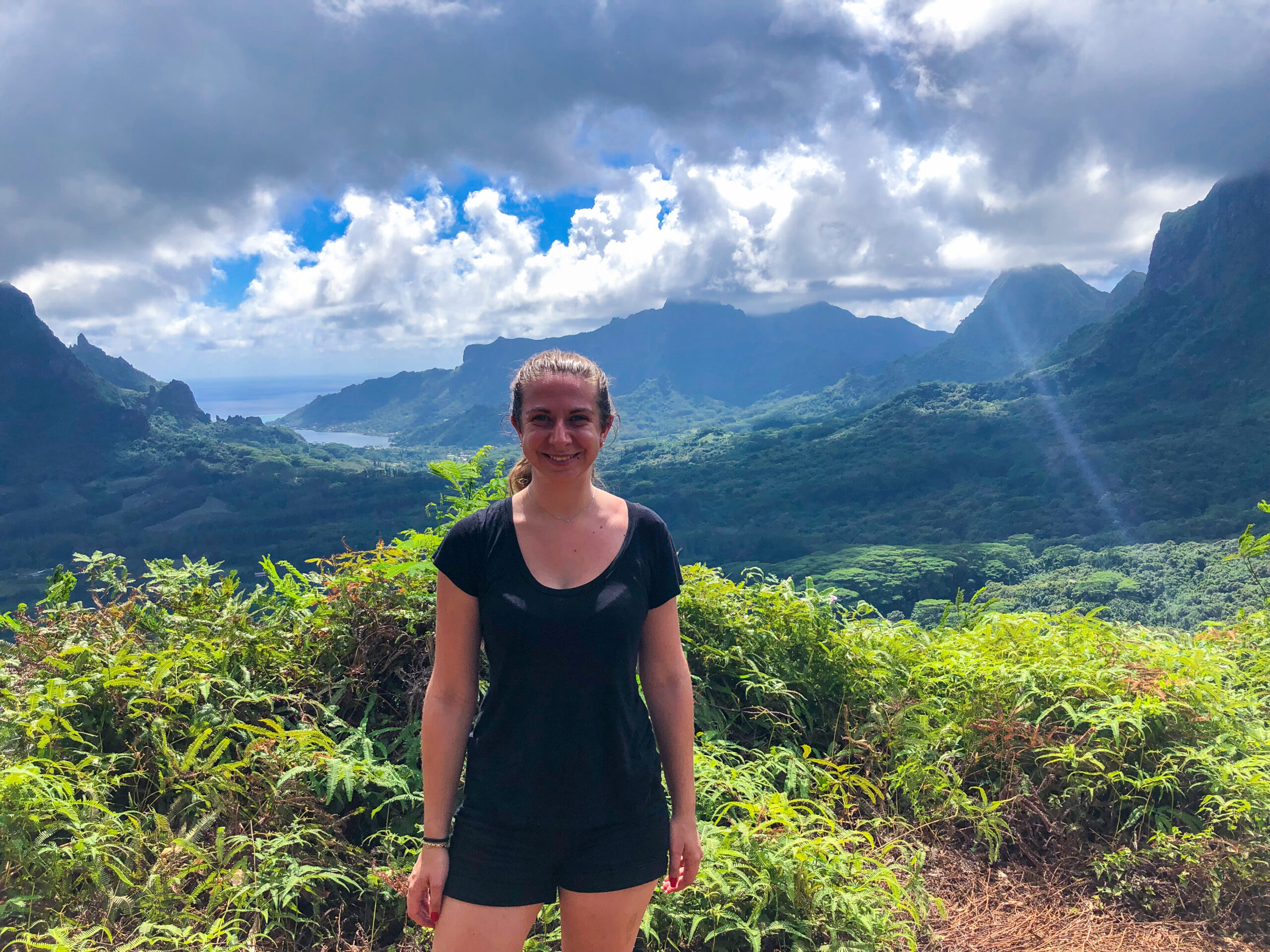
4×4 Safari Tour
In addition to all the hiking trails, Moorea is also perfect for exploring by 4×4. The avantage of a 4×4 Safari Tour is that it allows you to cover more of the island in less time, thanks to the mobility of the vehicle. While hiking gives you a deep connection with nature, the Safari Tour offers the opportunity to discover even more of the island’s stunning landscapes and hidden gems.

The 4×4 Safari Tour begins at Cook Bay. Unfortunately, the weather wasn’t ideal that day, but it revealed a different, yet equally beautiful side of the island. Our driver also took us on a journey up to the Belvedere Lookout. The view was completely different from the day before, but is was still magical.
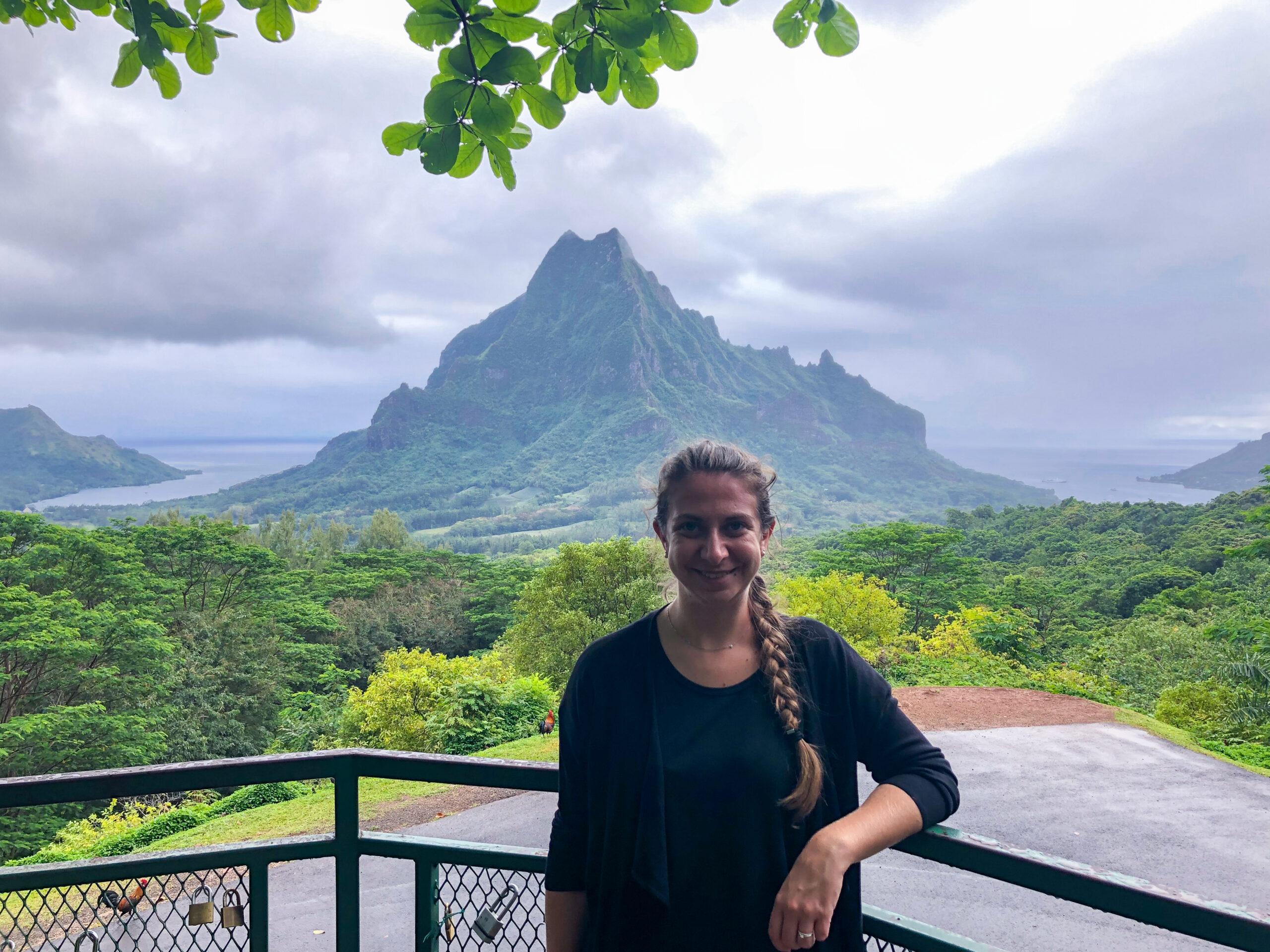
The first stop on the tour was a cultural site nedtled in the heart of nature called Opunohu. This area is home to several ancient religious and agricultural sites. The main marae, named Ti-irua, features an impressive wall made of stone blocks, measuring 40 meters in length and 17 meters in width.
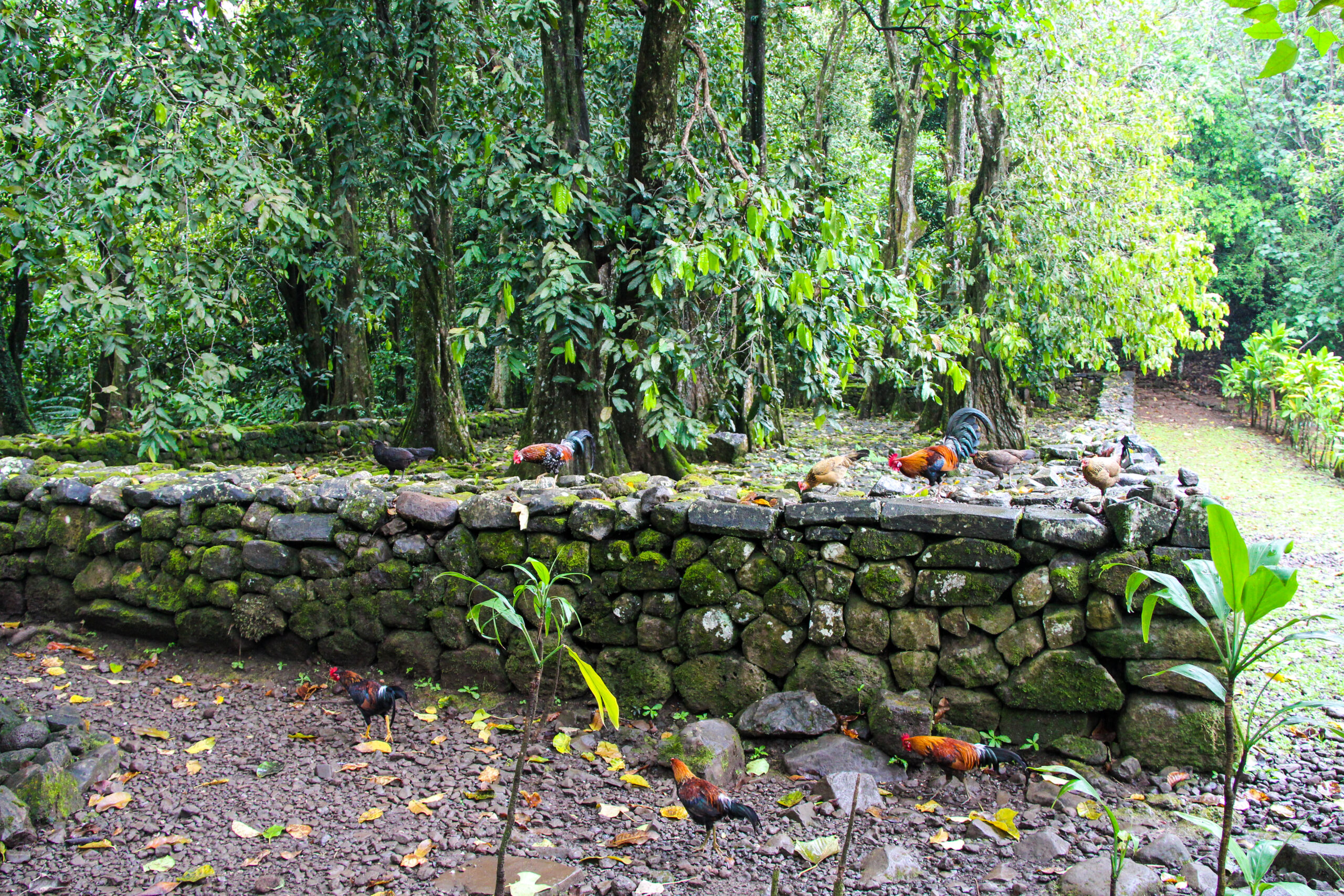
Although it’s an old and abandoned site, it’s still home to a few unexpected inhabitants. Our guide showed us how to attract the many free-roaming chickens simply by cracking open a few nuts. They come running! Clearly used to visitors, they enjoy being fed and show no fear of tourists. Another fascinating resident of the area is the giant snail, a slow-moving but impressive species that also calls this ancient site home.

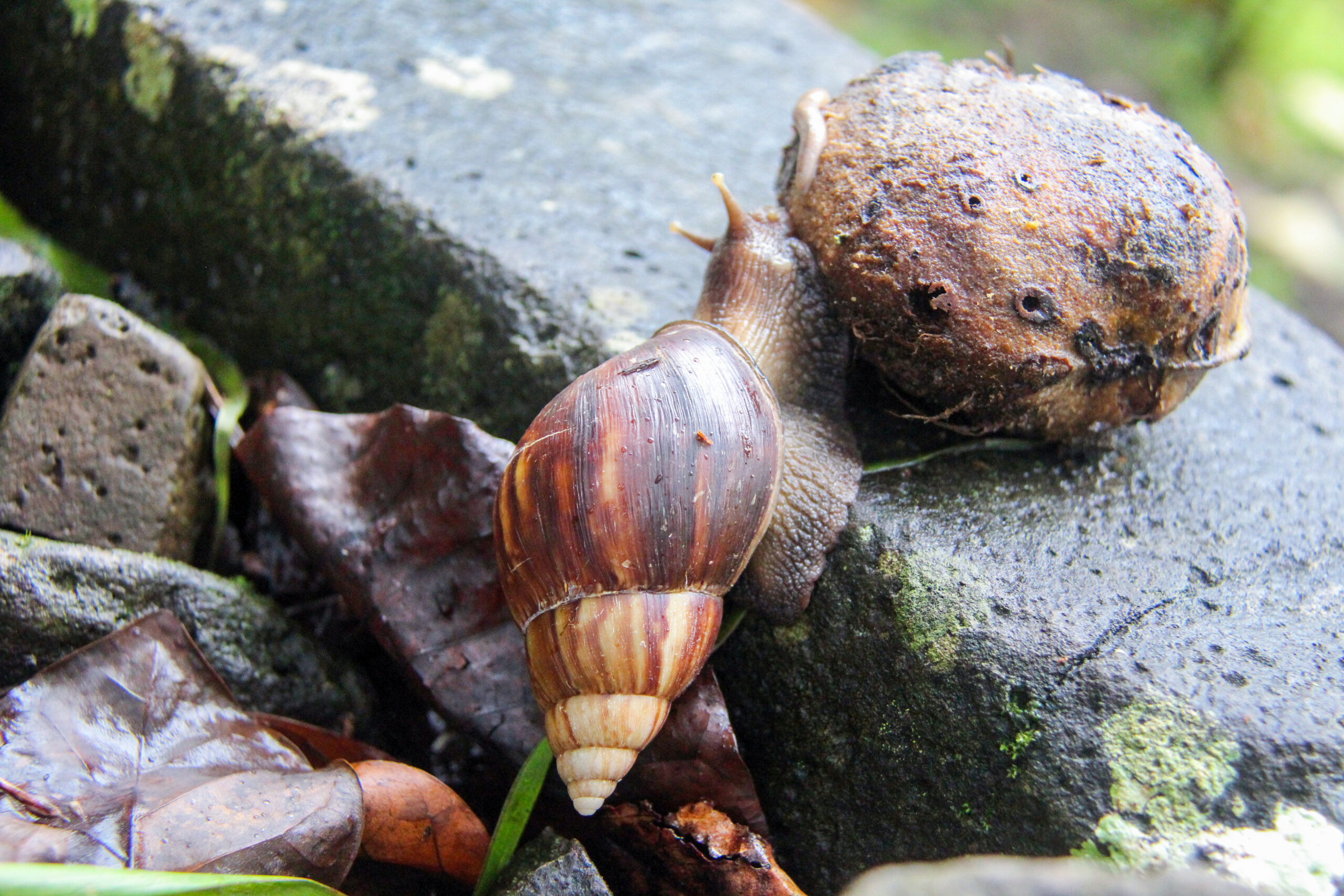
Another highlight of the tour is the stop at the Agricultural College, where you get to explore vanilla plants, banana groves, and even a vibrant pineapple field. The guide shares fascinating insights into the challenges of growing vanilla in French Polynesia. Tahitian vanilla is one of the most expensive spices in the world, largely because wild vanilla no longer grows naturally in Tahiti. Cultivating it is a highly labor-intensive process, requiring careful hand-pollination and constant attention.
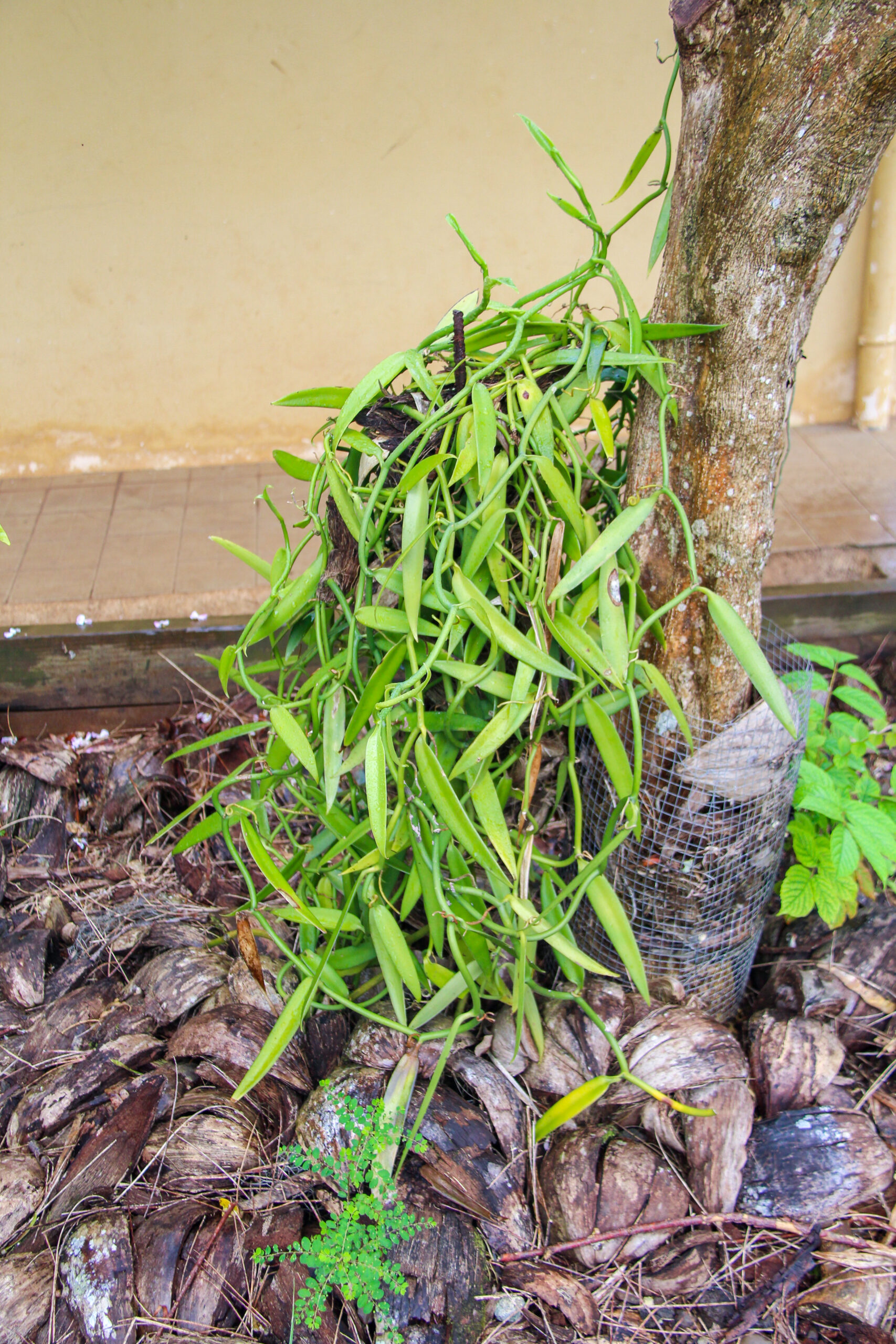
The final stop on the tour is the Manutea juice factory. While it’s essentially a shop, it offers a fun and tasty experience where you can sample a variety of locally made juices and rums. From tropical fruit blends to infused spirits, there’s something for everyone. It’s hard to leave without picking up a bottle or two as a souvenir.

Get inked by James Samuel
I have to admit that getting a tattoo in Moorea isn’t a typical tattoo experience. But hey, there’s a first time for everything. Traditional Tahitian tattooing is deeply rooted in Polynesian culture, though the practice was banned in 1986 due to hygiene regulations. Thankfully, it was officially reauthorized in 2001, and today it’s not only safe but also an incredibly meaningful way to connect with local heritage.
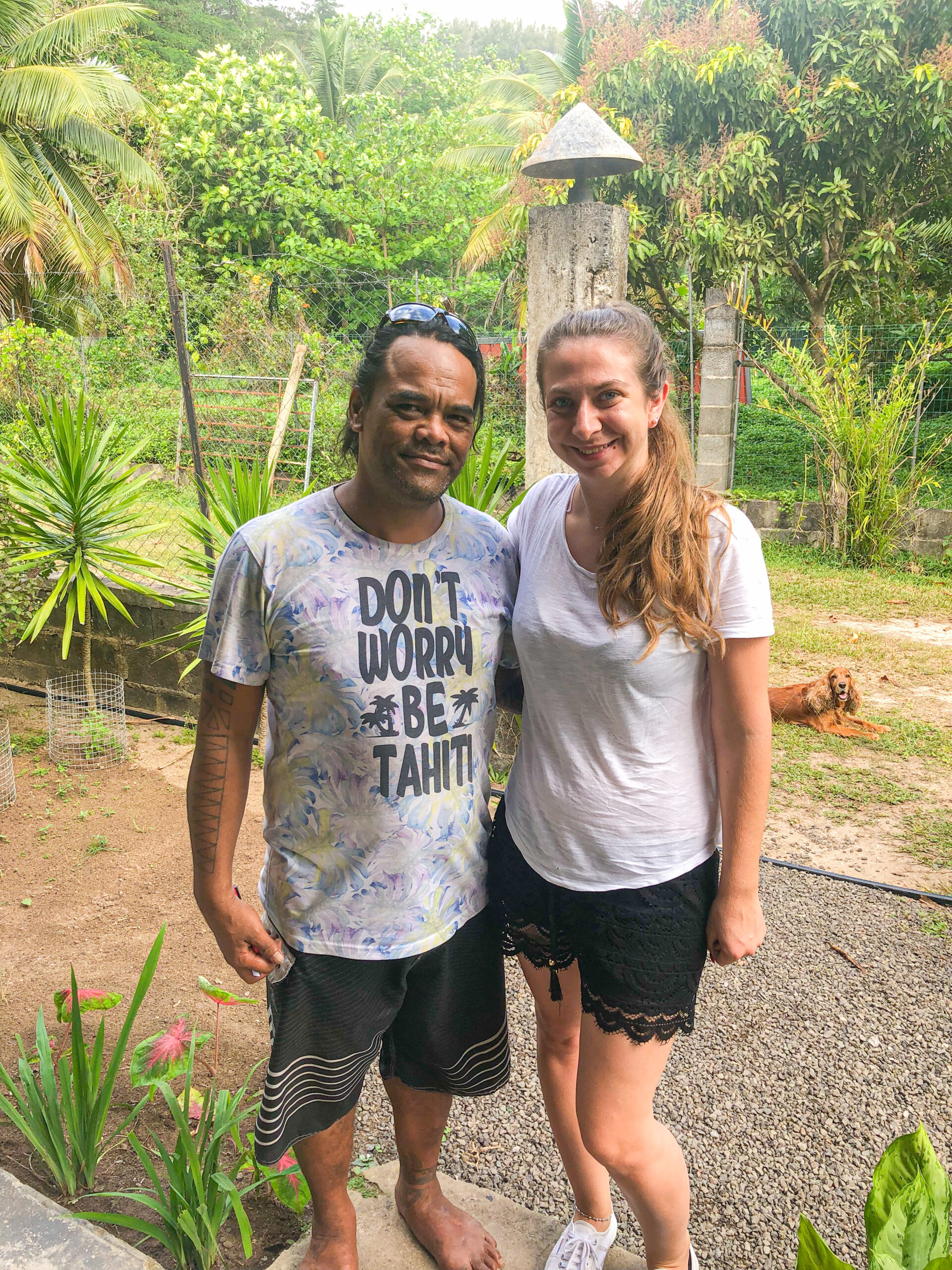
James Samuela is a renowned traditional tattoo artist in French Polynesia and a direct descendant of some of the earliest tattoo masters from the Marquesas Islands. He spent five years studying in Paris and went on to work as a tattoo artist in France, Spain, Switzerland, and the United States. With this rich background and international experience, he returned to Moorea, where he is now one of the few artists in French Polynesia still practicing the traditional art of tatau.
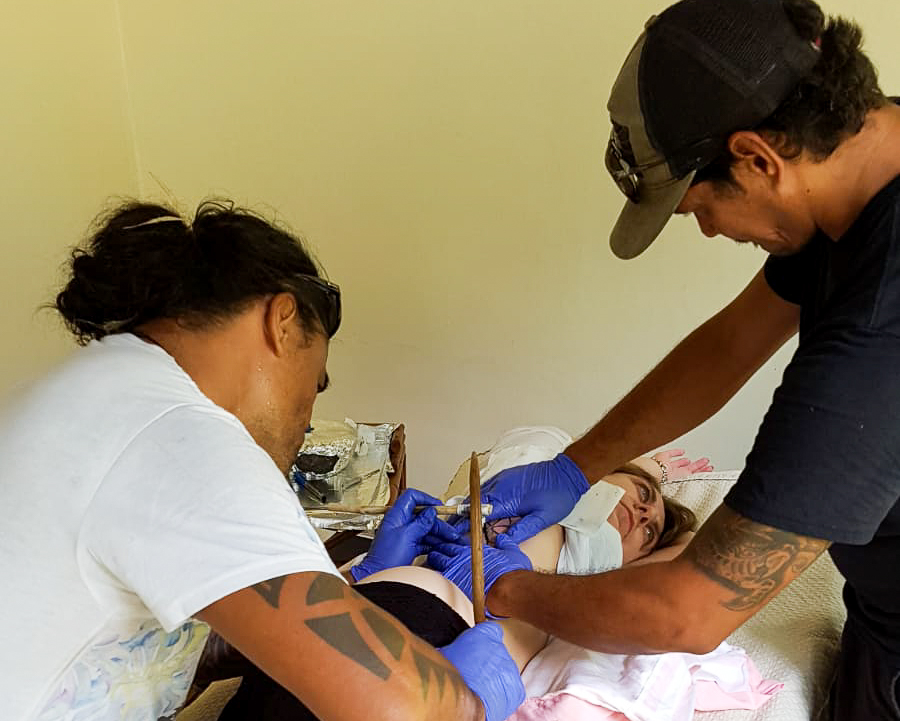
The traditional Tahitian tattoo practice was developed by the ancestors and holds deep cultural significance. Interestingly, the word „tattoo“ actually originates from the Tahitian word tautau, which mimics the tapping sound made during the tattooing process.
Unlike modern tattoos done with machines, traditional tatau is performed using a comb-like tool with around 20 sharp needles, traditionally made from shark teeth or bone. This comb is placed on the skin, and the artist uses a second wooden stick to tap it, driving the ink beneath the skin. The process requires two people: one to stretch the skin, and the other to carry out the tattooing itself.
Read next: Top 10 things to do in Banff National Park, Canada
